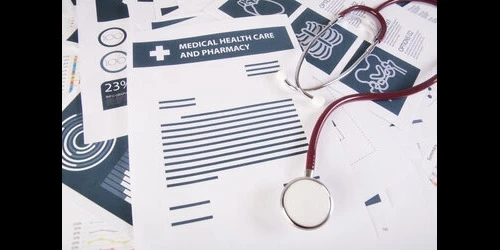In the increasingly digital landscape of healthcare data management, safeguarding patient information is not just a legal obligation—it's a cornerstone of trust between patients and healthcare providers. The Health Insurance Portability and Accountability Act (HIPAA) sets the standard for protecting sensitive patient data. As organizations turn to cloud solutions to handle this data, understanding how these technologies can align with HIPAA compliance is crucial. Snowflake, a leader in cloud data warehousing, offers robust capabilities that can help healthcare organizations achieve and maintain HIPAA compliance. Here’s what you need to know.
What is HIPAA Compliance?
HIPAA, the Health Insurance Portability and Accountability Act of 1996, was enacted to protect sensitive patient health information from being disclosed without the patient's consent or knowledge. HIPAA compliance involves adhering to stringent standards to ensure the privacy, security, and transmission of protected health information (PHI).
Key Provisions of HIPAA
HIPAA compliance is divided mainly into two rules:
The Privacy Rule, which sets standards for the protection of PHI held by covered entities and gives patients an array of rights with respect to that information. The Security Rule, which sets standards for the security of electronic protected health information (e-PHI).Covered entities, including healthcare providers, health plans, and healthcare clearinghouses, must ensure they meet these compliance requirements or face significant fines.
What is Snowflake?
Snowflake is a cloud-based data warehousing service that has revolutionized data storage, processing, and analytics. It separates computer and storage functionalities, allowing organizations to scale up or down without significant downtime or performance loss. Snowflake supports various data types, including structured and unstructured data, making it an all-encompassing solution for organizations' data needs.
Features of Snowflake
Dynamic and Scalable Architecture: Snowflake’s architecture allows it to handle vast amounts of data and numerous concurrent users without a compromise in performance. Secure Data Sharing: Snowflake enables secure data sharing between Snowflake accounts, ensuring that shared data does not leave the platform. Data Cloning and Time Travel: These features aid in data management by allowing users to create copies of databases and recover old data within a specified period, respectively.How Snowflake Aids in HIPAA Compliance
Snowflake provides multiple features that help healthcare organizations ensure that their use of cloud services complies with HIPAA regulations.
Encryption and Data Protection
Snowflake uses robust encryption methods to protect data at rest and in transit, a critical component of HIPAA’s Security Rule. It employs AES-256 encryption to secure stored data and TLS protocols to safeguard data as it moves between Snowflake and users.
Comprehensive Access Controls
To comply with HIPAA’s minimum necessary requirement, Snowflake allows organizations to finely tune access controls, ensuring that only authorized personnel have access to sensitive PHI. Snowflake supports role-based access control (RBAC), which can be configured to enforce data governance policies rigorously.
Audit Trails
Maintaining an accurate and comprehensive audit trail is essential for HIPAA compliance. Snowflake logs all access and query actions performed on the platform, enabling healthcare organizations to monitor who accessed what data and when, providing essential insights during audits or reviews.
Maintain HIPAA Compliance With Snowflake
While Snowflake provides the tools necessary for HIPAA compliance, effectively utilizing these tools is paramount in achieving and maintaining compliance. Here are some best practices:
Regularly Review Access Permissions
Regular reviews of who has access to what data in Snowflake ensure compliance with the HIPAA minimum necessary rule. It’s crucial to adjust these permissions as roles or responsibilities change within the organization.
Conduct Regular Audits and Compliance Reviews
Use Snowflake’s logging capabilities to regularly audit access and usage of PHI. This helps identify potential compliance issues early and demonstrates a commitment to safeguarding patient data.
Stay Informed About Compliance Updates
HIPAA regulations can evolve, and so can cloud technology. Staying informed about changes in both areas is crucial for maintaining compliance. Snowflake often updates its features and capabilities, and these can impact how you use the platform for HIPAA compliance.
Invest in Training
Ensure that all employees who use Snowflake understand the importance of HIPAA compliance and know how to use Snowflake’s features to maintain it. Regular training sessions can help keep this knowledge fresh and relevant.
Partner with Experts
Consider partnering with HIPAA compliance experts or consultants who can provide insights and advice tailored to your specific use of Snowflake. This can be especially beneficial when setting up new workflows or during major changes to your data management strategies.
Conclusion
Snowflake offers powerful tools that can help healthcare organizations manage their data in compliance with HIPAA. By leveraging its robust security features, comprehensive access controls, and detailed logging capabilities, organizations can not only comply with HIPAA but also enhance their overall data security posture. With thoughtful implementation and ongoing management, Snowflake can be an integral part of a healthcare organization's compliance strategy, ensuring that patient data is secure and private in today's digital world.
explore the Understanding Healthcare Software Regulations and Compliances.


